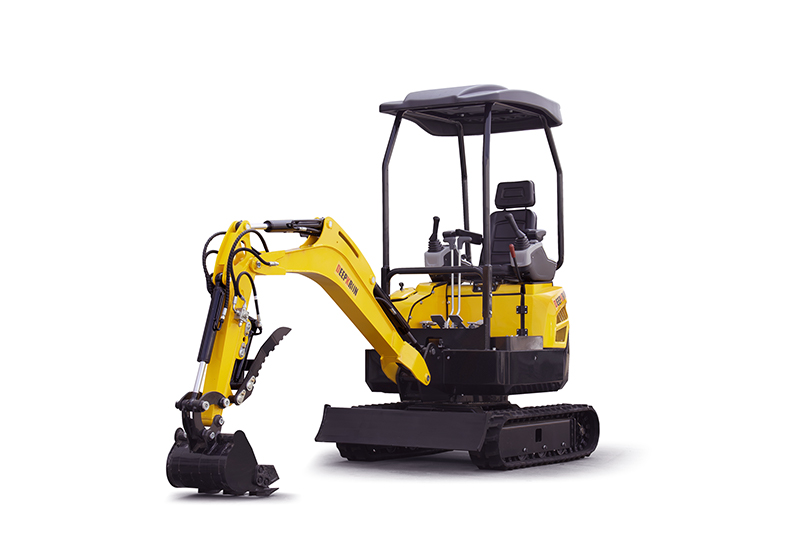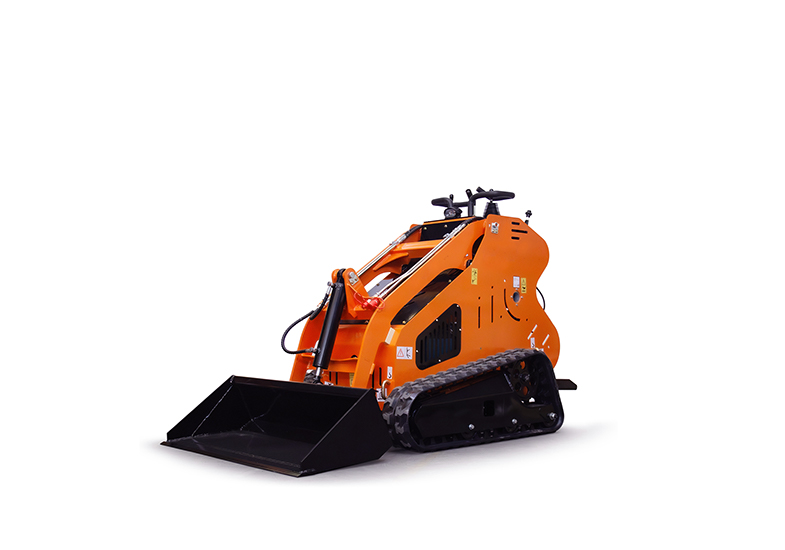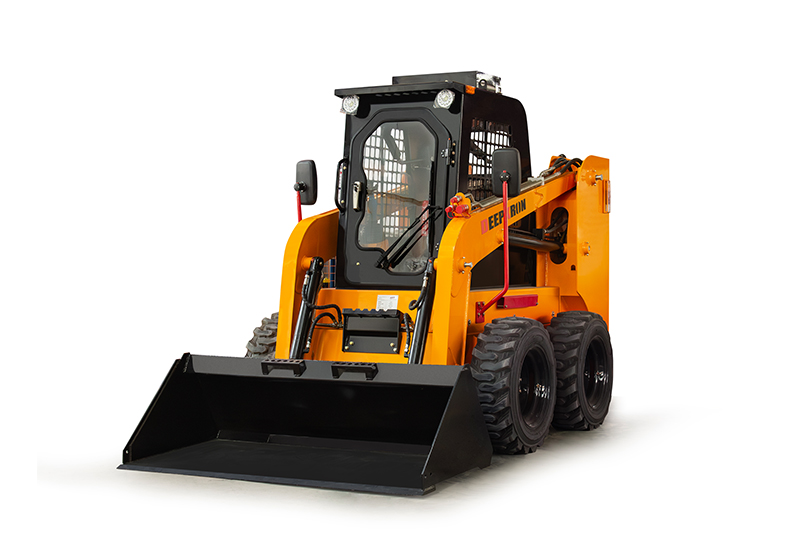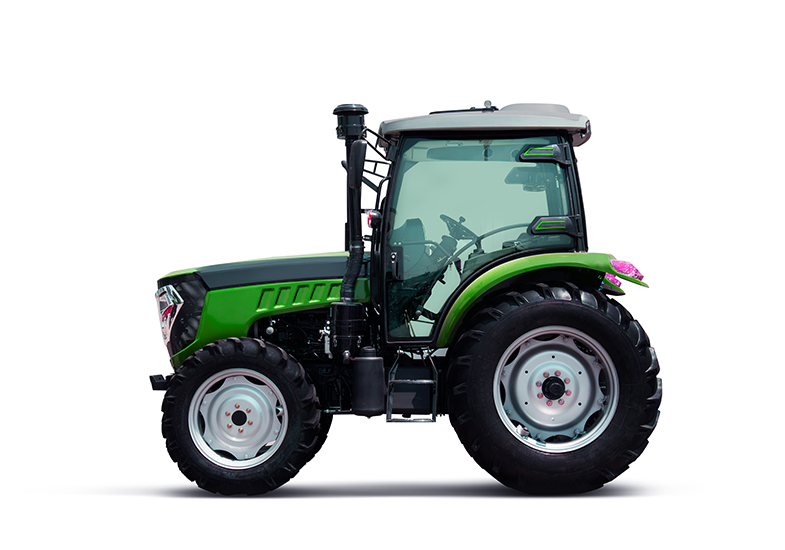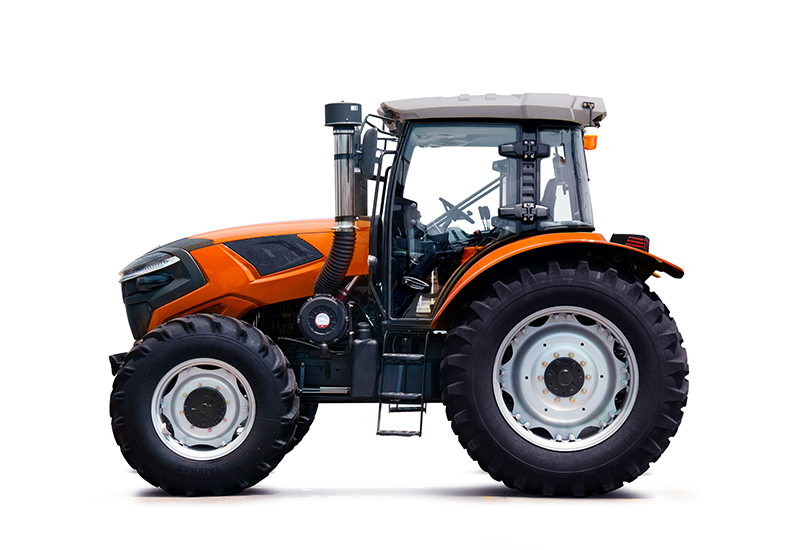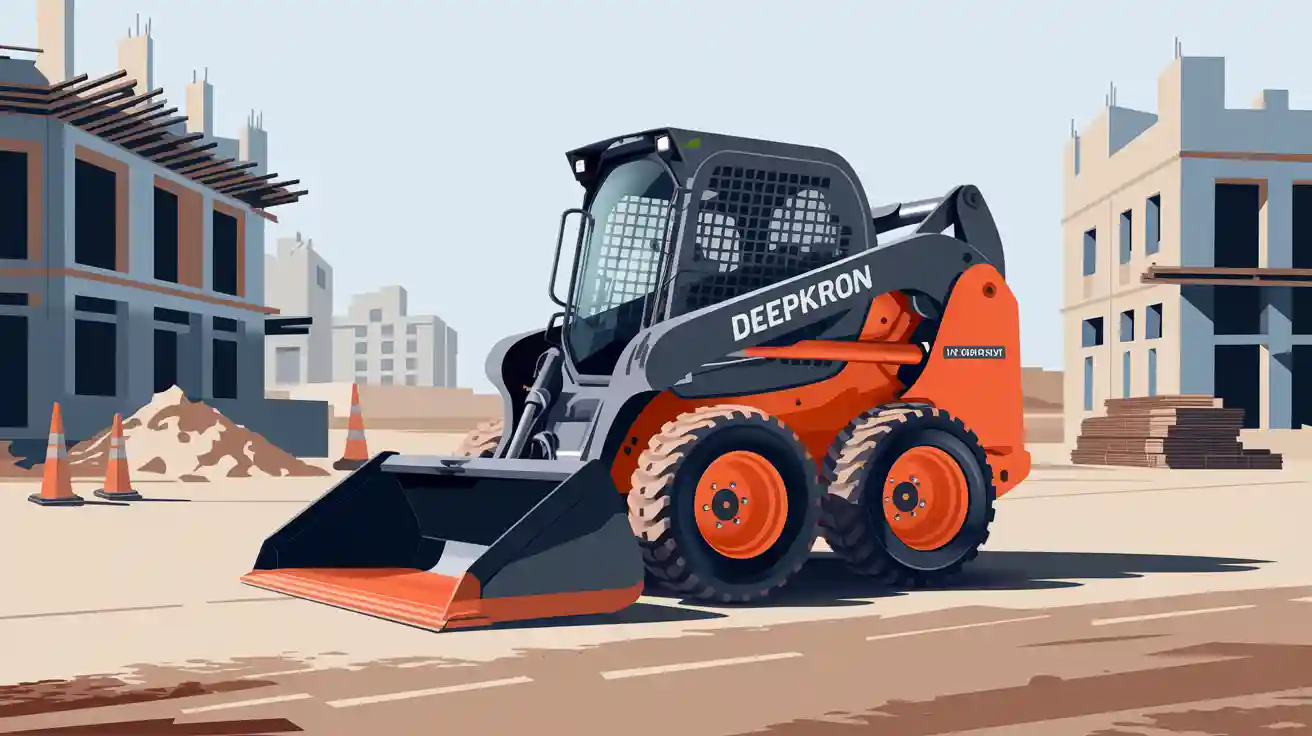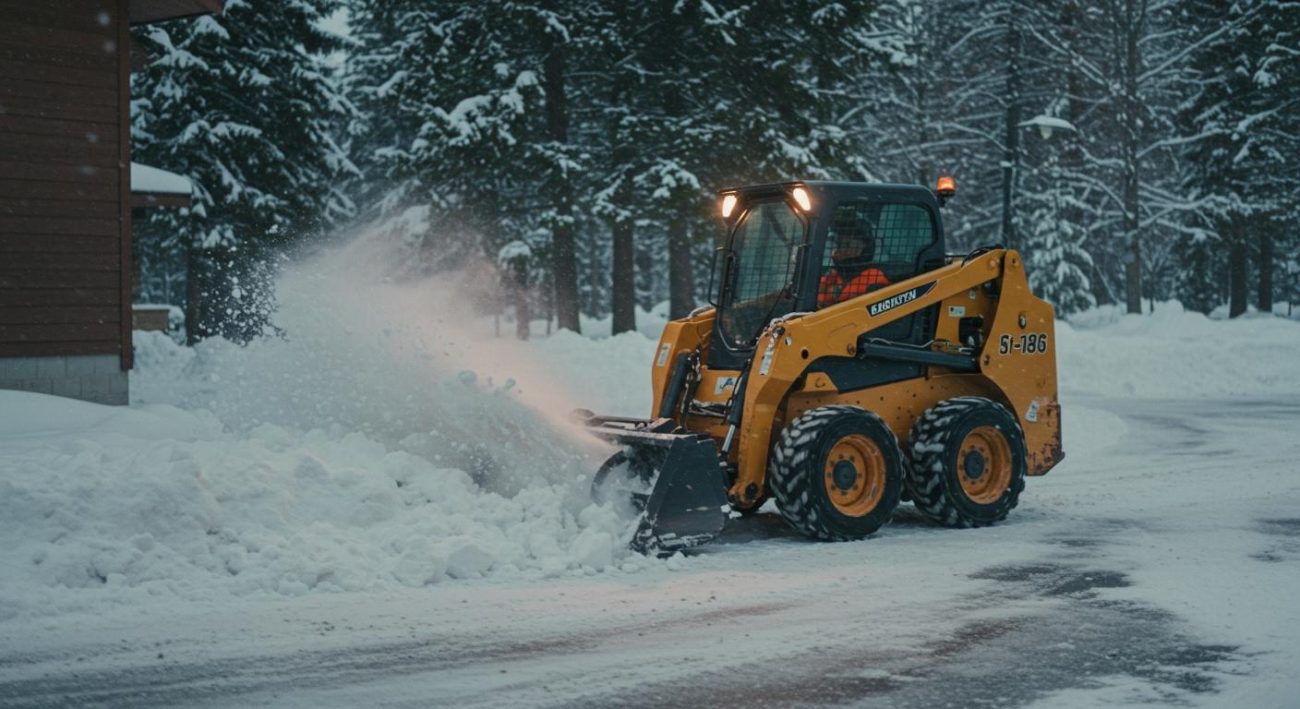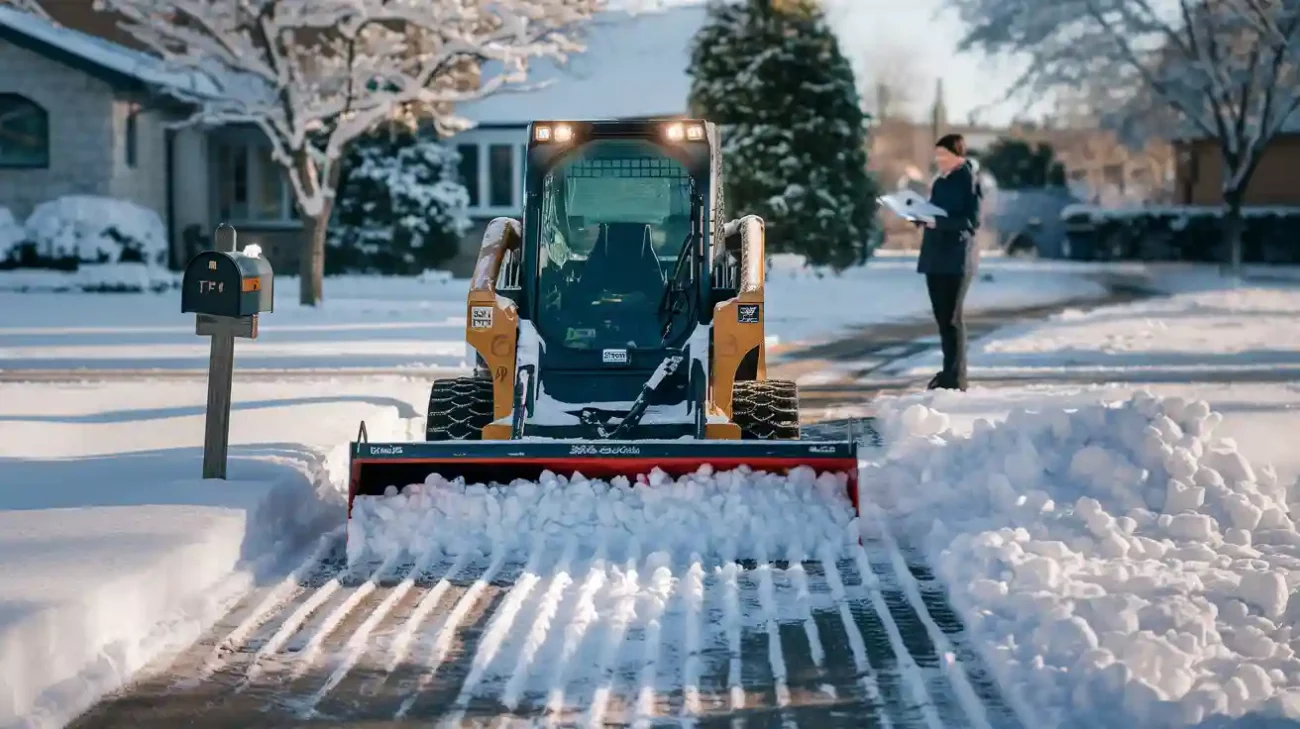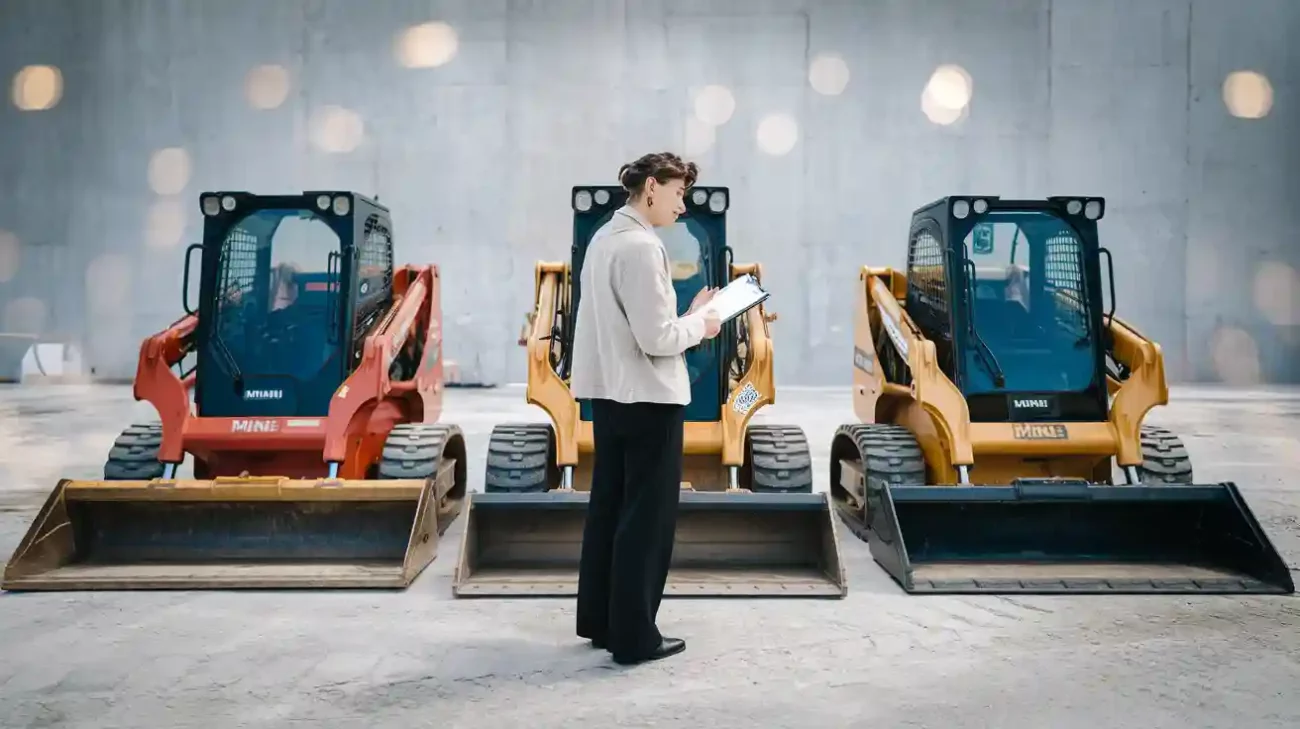A skid steer loader is small but very strong. It can lift, dig, and move things easily. You will find these machines in many places. They are used on construction sites, farms, and for landscaping. People also use them to take care of property. Many people use them for grading, hauling, and moving snow. DeepKron makes great compact machines. Their models include the DeepKron DK300, DeepKron DK500, and DeepKron DK700. These machines help you finish your work well.
Key Takeaways
Skid steer loaders are small and powerful machines. They can turn around without moving forward or backward. They work well in small spaces. These loaders use attachments that you can change quickly. They help with digging, lifting, grading, and removing snow. DeepKron has skid steer loaders like the DK300 and DK700. These machines are compact and easy to use. They fit different job sizes and needs. Attachments help you work faster and with less effort. Skid steer loaders save time, space, and money. They make hard jobs easier and safer.
Skid Steer Loader Basics
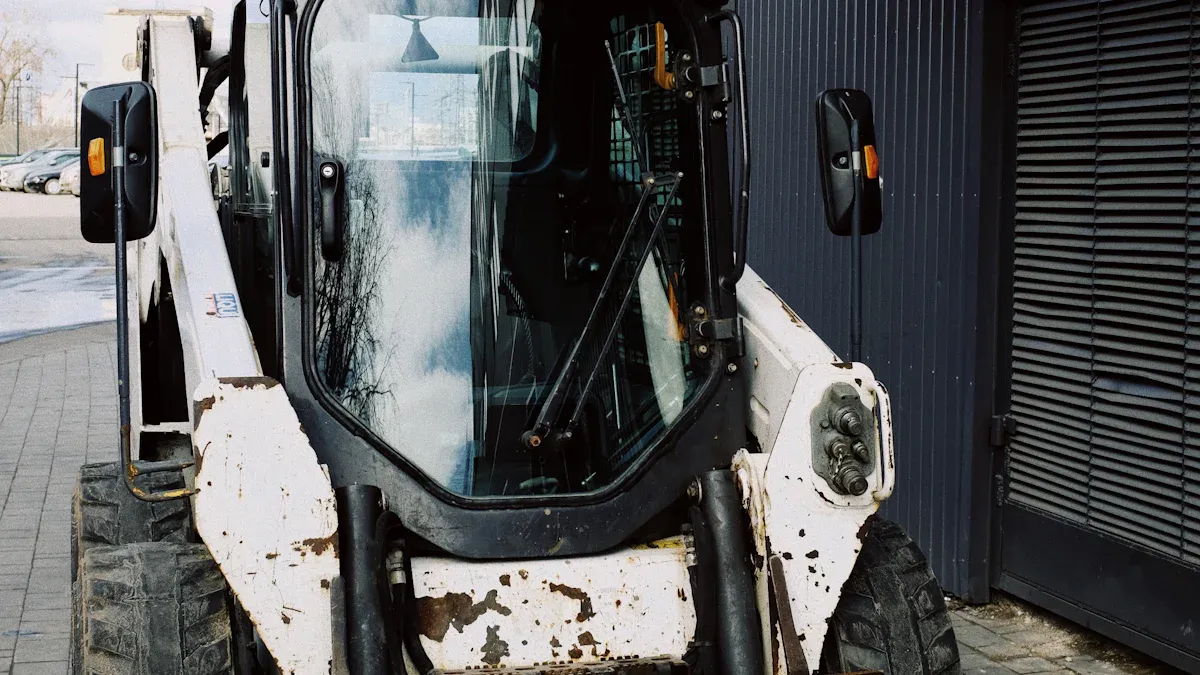
Definition
You might wonder what makes a skid steer loader different from other machines. This compact construction machine stands out because of its special steering system. You control the wheels on each side separately, so the loader can turn in place. That means you can spin the machine around without moving forward or backward. The steering system lets you work in tight spaces and get close to walls or obstacles.
A skid steer loader uses a universal attachment plate and wedge pins. You can switch out buckets, forks, or other tools quickly. The loader also has an auxiliary hydraulic system. This system sends pressurized oil to power different attachments. You get strong lifting and digging force, even though the machine is smaller than most loaders.
Inside the cab, you stay safe with a rollover protection structure (ROPS). The loader arms move up and down with hydraulic power. You use joystick controls to operate the bucket and attachments. The drivetrain uses wheels connected to hydrostatic motors, so each wheel moves on its own. This setup gives you precise control and lets you handle tough jobs with ease.
Tip: If you need a machine that can pivot on a dime and switch tools fast, a skid steer loader is your best friend on the job site.
Core Functions
When you use a skid steer loader, you get a machine that does many jobs. Here are some of the main things you can do:
Load, transport, and unload materials like dirt, gravel, or debris.
Clean up construction sites and remove waste.
Stack building materials or move supplies around.
Operate different attachments, such as buckets, augers, or shears.
Work in narrow or crowded areas where bigger machines cannot fit.
Crush, compact, or mix materials for building projects.
Clear obstacles and keep the site safe.
You control the loader with levers or joysticks inside the cab. The front bucket scoops or pushes material. You can change attachments to handle special tasks. The loader helps you finish jobs faster and with less effort.
Here’s a quick look at how a skid steer loader compares to other compact equipment:
Feature | Skid Steer Loader | Compact Wheel Loader |
|---|---|---|
Maneuverability | Turns in place; great for tight spaces | Smoother turns; better for open areas |
Speed | 7-10 mph; good for quick jobs | 10-14 mph; faster for big sites |
Bucket Capacity | Smaller bucket; good for light loads | Larger bucket; better for heavy loads |
Operator Comfort | Entry over bucket; newer models more comfy | Side-entry door; more space |
Operating Costs | More tire wear; higher fuel use | Lower tire wear; less fuel use |
You get agility and speed with a skid steer loader. The machine works best on firm, flat ground. If you need to move quickly in a small area or switch between tasks, this loader saves you time and energy.
Versatility and Uses
Maneuverability
You want a machine that can squeeze into tight spots and handle tricky corners. That’s where a skid steer loader shines. Its compact size lets you fit through narrow gates and even some doorways. You can work in places where bigger machines just can’t go.
The tight turning radius means you can spin around obstacles or back out of corners without trouble.
You can pivot in place, so you don’t need extra space to turn.
Both wheeled and tracked models exist. Tracked versions give you better grip and stability, especially on rough or muddy ground.
Tip: If you need to work under low ceilings or in cramped areas, a skid steer loader’s low cab height and zero-turn ability make your job much easier.
Compared to compact wheel loaders, you get a huge advantage. Skid steers can turn on a dime, while wheel loaders need more room to steer. This makes skid steers perfect for demolition, landscaping, or any job with lots of obstacles.
Applications
You can use a skid steer loader for all kinds of jobs. It’s like having a toolbox on wheels. Here are some of the top ways people use these machines:
Excavation – Dig foundations, trenches, or clear ground for new projects.
Grading and Leveling – Smooth out soil or gravel to get a flat surface.
Soil Preparation – Mix and loosen soil to get it ready for planting.
Land Clearing – Remove brush, debris, or old materials from a site.
Material Handling – Move dirt, mulch, rocks, or other heavy stuff with different attachments.
You can also switch attachments to handle seasonal work. In winter, add a snow blade or snow blower to clear driveways and parking lots. Use a salt spreader to keep walkways safe. In spring or summer, swap to a bucket or auger for landscaping or digging. This flexibility means you can keep working all year, no matter the weather.
Note: Regular maintenance and the right attachment help your skid steer loader handle different terrains and conditions, so you stay productive in every season.
Attachments and Capabilities
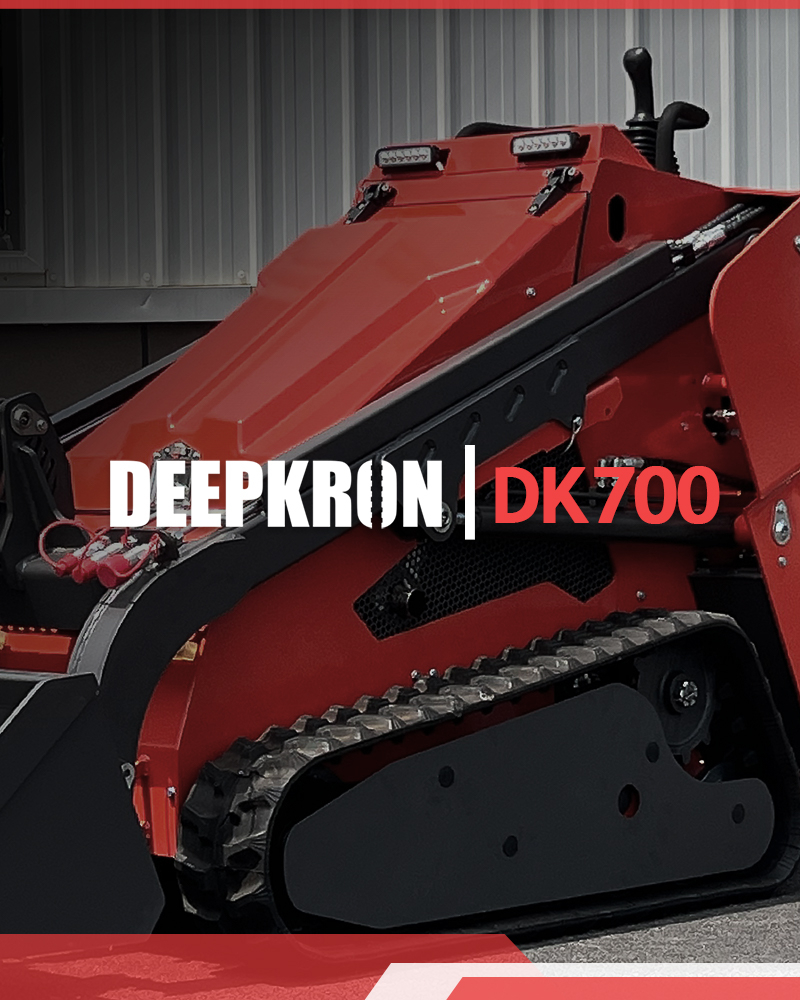
Common Attachments
You can turn your machine into a true multitasker with the right attachments. These tools snap on quickly and let you tackle all sorts of jobs. Here are some of the most popular attachments you’ll see on job sites:
Buckets: Move dirt, rocks, snow, or debris with general-purpose, grapple, or heavy-duty buckets.
Augers: Drill holes for fence posts, trees, or footings in minutes.
Trenchers: Dig narrow trenches for pipes, wires, or irrigation lines.
Dozer Blades: Push and grade soil or gravel for a smooth finish.
Backhoes: Dig deep for foundations or utility lines.
Pallet Forks: Lift and carry pallets or heavy materials like a forklift.
Grapples: Grab and move logs, rocks, or brush with ease.
Hydraulic Breakers: Smash concrete or asphalt for demolition work.
Snow Removal Tools: Clear driveways and lots with snowblowers or blades.
Brush Cutters: Cut through thick grass and small trees.
Box Blades: Level and grade surfaces for landscaping or construction.
Tip: You can switch attachments in seconds with quick-attach systems, so you spend less time setting up and more time working.
Here’s a quick table to show what each attachment does:
Attachment | Main Use |
|---|---|
Bucket | Moving materials |
Auger | Drilling holes |
Trencher | Digging trenches |
Dozer Blade | Grading and leveling |
Pallet Forks | Lifting pallets |
Grapple | Handling bulky items |
Hydraulic Breaker | Demolition |
Brush Cutter | Clearing vegetation |
Productivity Boost
When you use attachments, you get more done in less time. You can finish jobs up to 75% faster compared to doing them by hand. Imagine digging a trench or clearing brush in minutes instead of hours. You also need fewer workers, which saves money and keeps your team safe.
Quick-attach systems let you swap tools without leaving the cab. You stay comfortable and keep working. Contractors say these features help them finish more projects each week and make the most of their equipment. You don’t need extra machines for every task, so you save space and cut costs.
Note: Attachments help you work smarter, not harder. You get better results, less stress, and more time for other tasks.
DeepKron Skid Steer Loader Lineup
DeepKron is a top company for small machines. They are known all over the world. They are very strong in track loaders and powerful compact machines.
Market Segment | 2025 Market Share |
|---|---|
Track Loaders | |
Power Output (101-200 HP) | About 35% |
DeepKron gives you more than just machines. You get new ideas, good quality, and a team that wants you to do well. Let’s check out two of their best models.
DK300 Mini Track Loader
If you want a small and easy-to-move machine, try the DK300 Mini Track Loader. It fits in tight spots and works on soft ground. It will not ruin grass or gardens. The DK300 has fingertip controls. This makes it easy for anyone to use. You can change attachments fast, so it works for many jobs.
Feature | DeepKron DK300 | Model A | Model B |
|---|---|---|---|
Engine Power | 13.5HP | 14HP | 12HP |
EPA-Friendly | Yes | Yes | No |
Compact Size | Yes | No | Yes |
Control System | Fingertip | Lever | Joystick |
Attachment Options | Many | Some | Many |
The DK300 keeps your lawn safe and is not loud. It is great for landscaping, building, or home projects. You can learn more on the DK300 Mini Track Loader product page.
DK700 Mini Track Loader
If you need more power, pick the DK700 Mini Track Loader. It can lift heavy things and do hard jobs. You get smooth joystick controls and quick attachment changes. The engine is quiet and EPA-friendly. The DK700 works in small spaces and on soft ground. You can use it almost anywhere.
People like these things about the DK700:
Easy controls
Fast attachment changes
Does not hurt the ground
Good mix of power and size
Can do many jobs
DeepKron helps you after you buy with service, warranty, and dealers. You can read more about the DK700 on the DK700 Mini Track Loader product page.
Tip: If you are a contractor, business owner, or homeowner, DeepKron’s skid steer loaders are good for any job.
You can count on these machines to handle tough jobs and boost your productivity. The market keeps growing, with a 4.4% annual rate expected through 2030, thanks to new tech and green solutions. DeepKron leads the way with the DK300 and DK700, offering EPA-friendly engines, modular designs, and electric options for cleaner, quieter work. Want to learn more or get a quote? Check out your options below:
Details | |
|---|---|
Phone | +1 646-234-0488 |
Physical Address | 418 Broadway, Albany, NY 12207 |
Contact Page Link |
FAQ
How do I choose between the DK300 and DK700?
Think about your job size and space. The DK300 works best for small areas and light tasks. The DK700 handles bigger loads and tougher jobs. If you need more power, go with the DK700.
Can I use different attachments with DeepKron skid steer loaders?
Yes! You can switch attachments quickly. DeepKron loaders fit many tools like buckets, augers, and forks. This makes your machine ready for almost any job.
Are DeepKron skid steer loaders easy to operate?
You will find the controls simple and user-friendly. Both models use joystick controls. Even if you are new, you can learn fast and work safely.
What kind of maintenance do these loaders need?
You should check fluids, tracks, and attachments often. Clean the machine after use. Follow the manual for service tips. Regular care keeps your loader running strong.
Where can I get help or parts for my DeepKron loader?
You can contact DeepKron’s support team by email or phone. Visit the contact page for more help. Dealers also offer service and parts.

